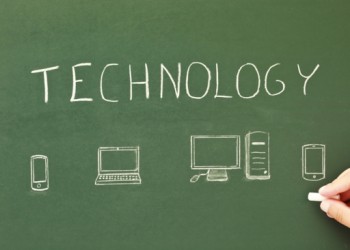In case you haven’t figured it out already, you need to take everything you know about what school was like when you were a kid and throw it out the window. If the fact that nearly every child these days is individually dropped off and picked up by their parents hasn’t already alerted you to the fact that it’s a different world, well… Let’s just say the growing emergence of schools which have official policies surrounding high-tech concerns like smartphone usage, cyberbullying and social networks should rapidly clue you in that the rules today are different.
Knowing that it’s a brave, new world out there, despite the much-publicized dangers that technology reportedly poses to today’s youth (often unaccompanied by balanced discussion of their equally meaningful upsides), it pays to remember: Digital learning is a key concept that needs to be embraced by educators in today’s classrooms. However, it’s also worth noting that definitions of high-tech, online and distance learning solutions often differ between school and university campuses. For example – digital learning could refer to the use tablets in the classroom. It could mean using online sites, services and programs as teaching tools, or as study aids built for at-home use. Alternately, it could even refer to the practice of using popular apps, social networks and communications platforms as tools to create your own digital assignments and agendas.
Bearing this in mind, the possibilities when it comes to digital and distance learning are endless. Regardless of your personal definition, for educators seeking ways to empower and get the most out of their students, here are five reasons why digital learning is so important, and can no longer be ignored.
Personalization: Digital learning offers an unprecedented ability to provide educational experiences that are tailor-made for each student. As pupils advance in programs on English, math, science, history, art or other subjects, teachers can now track their individual progress, identify specific areas of focus for each student with actual data to back it up, and present solutions that address their specific needs. As has long been established, students thrive most in situations where educational experience has been customized to their unique needs, and digital learning provides teachers with the tools and opportunity to offer individualized learning programs.
Accessibility: By embracing digital devices and connected learning, classrooms around the country and around the globe can not only connect to one another to share insights and boost learning, experience and communications skills. The practice also allows educators to enjoy a level playing field, where inner-city classrooms, charter schools, private schools and even homeschooled children all have access to the same learning and opportunities. Even smaller and less well-staffed or -funded schools can tap into the trend to provide extensive course programming and curricula, as well as insight into non-traditional topics that may not otherwise be accessible for budgetary or resource-related concerns.
Cultural Relevance: Nearly every aspect of the real world has gone digital, including fields such as manufacturing, science and medicine as well as pop culture-related industries such as art and entertainment. Not only are employers increasingly turning to interactive training tools to boost engagement, learning and retention. Even before students enter the workforce, any college experience involves the use of a dizzying array of technological devices and connections. Digital learning in elementary, grade and high schools prepares students for the reality of secondary education and modern careers.
Efficiency: Digital learning solutions also bring to bear a number of key efficiencies, both real and virtual, that can’t be matched by traditional learning techniques. Whether it’s the environmental impact recognized by the need for less paper for handouts and books, time savings provided by pupils’ unprecedented access to information and the ease of research facilitated, or the cost savings to be had due to the multiple functions today’s Swiss Army-like devices offer, realize. Digital learning provides an effective way to cut costs, maximize resources and heighten both reach and impact from myriad angles.
Performance: Studies have shown that students using technology as an education tool become more engaged in the process and more interested in growing their knowledge base – in some cases, to the point that they don’t even realizing they’re actively learning. Likewise, research has demonstrated that interactive solutions boost retention rates and test scores, being far more engaging and memorable than voluminous textbooks or one-sided lectures. Online and high-tech programs not only often provide better context, a greater sense of perspective, and more arresting activities that allow them to better connect with students. They also frequently offer a more interesting and involving way to digest information.
Want to learn more about bringing technology and education together in the classroom? Connect with us on Facebook, Google+ and Twitter.














